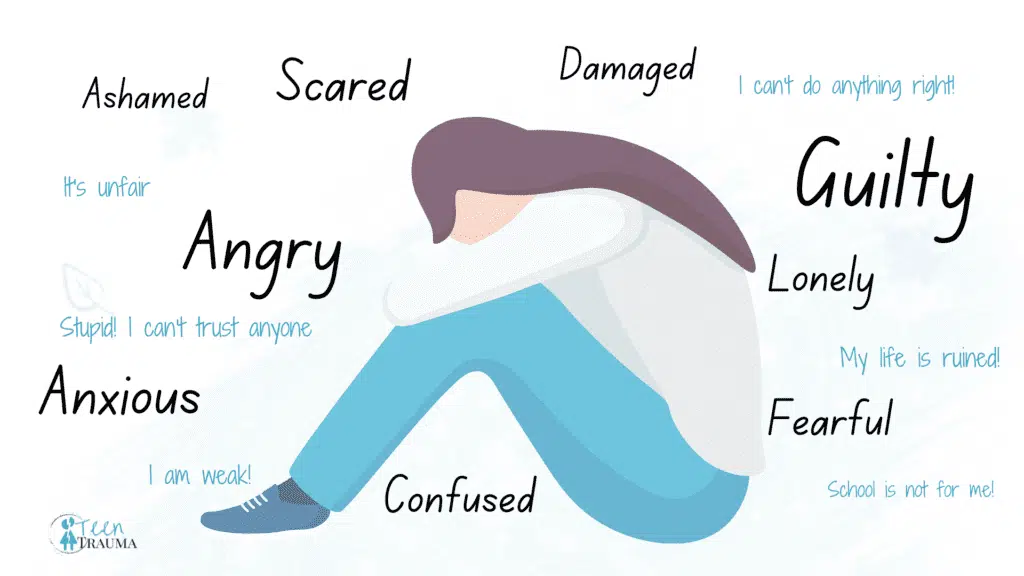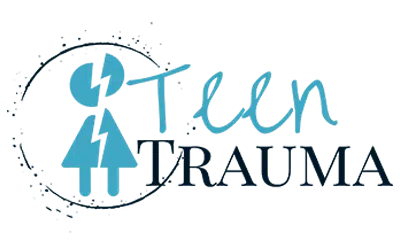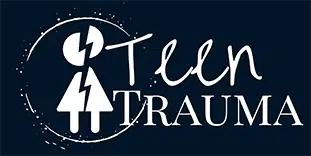Post Traumatic Stress Disorder (PTSD) is a mental health problem (psychiatric disorder) that occurs after an individual has experienced, witnessed, or been exposed to a frightening event. Many events can cause trauma, like seeing or being involved in a bad car accident, animal bites, tragedies like terrorist attacks, bombings, and even natural disasters.
When adolescents experience PTSD, it often results from physical or emotional harm due to a traumatic events like physical abuse, sexual abuse, sexual assault, violent attacks like muggings, kidnapping, rape, torture, emotional abuse, bullying, and neglect.
Parents should know that often PTSD results from what happened to someone close to the child or something they witnessed and not necessarily something that happened to them.
How to Recognize PTSD in Teens and Children
In children and adolescents, PTSD presents as scary thoughts, recurring nightmares, memories of the traumatic event. It is common for children to feel emotionally numb for a long time before they show PTSD symptoms. It can take six months or more for children to show signs, often giving parents a false sense that things are fine when they are not.
It is likely for teens to relive their negative experiences with flashbacks or nightmares. An individual may feel detached and have difficulty sleeping, making decisions and may even have suicidal thoughts. The PTSD symptoms impact their daily life significantly, yet girls especially often find ways to hide their symptoms for a long time.
It is common for children to feel emotionally numb for a long time before they show PTSD symptoms. It can take 6 months or more for children to show signs. #PTSD #Teens #Trauma #TeenTrauma
teentrauma.com Tweet
What does PTSD Look like in Teenage Girls?
An adolescent girl with PTSD may have experienced traumatic events in their childhood or adolescence that have triggered a recurring reaction. Teenage girls are more likely to be diagnosed with PTSD than boys. PTSD for these girls may come in the form of flashbacks as the teen repeatedly re-experiences the event.
The three most common causes of PTSD for girls are sexual assault, severe physical assault, or losing a loved one.
A girl who has been sexually abused is three times more likely to develop psychiatric disorders and four times more likely to develop an eating disorder.
PTSD Symptoms in Teen Girls
A young woman may also experience an exceptional physical response brought on by triggers that remind them of the traumatic event. Physical responses may include a pounding heart, sweating, headaches, stomach aches, and nausea.
Emotional responses may include difficulty showing affection, jitters, nervousness, and irritability. Aggressiveness, anger, depression, problems in school, feeling shame, or being excessively worried are also typical emotional responses.

SHARE
How Do You Know if Your Teenage Daughter Has PTSD?
Although a PTSD response may occur immediately following a traumatic experience, there are some occasions where this response is unexpected. For example, the traumatic event may have happened many years earlier. And suddenly, the girl may develop a deep-seated disorder relating to this incident. Related stimuli may then resurrect this memory during the turbulent adolescent years and she suddenly starts experiencing symptoms.
Each year, there are over three million reports of PTSD made to child protective services. Of these cases, neglect accounts for 65%, physical abuse is 18%, a further 10% have experienced sexual abuse, and mental or psychological accounts for 7%. In some circumstances, the neglect is actually a misperceived event, but it is hidden molestation.
- 90% of sexually abused children develop PTSD
- 77% of children exposed to a school shooting and 35% of urban youth exposed to community violence develop PTSD
Hidden Traumas, Complex Trauma and Delayed Reactions
It is sometimes difficult to get to the root of the PTSD, and parents trying to force information out of their teen can create an impassable rift.
The difference between PTSD and Complex Trauma is that PTSD is an anxiety disorder resulting from a traumatic event. In contrast, Complex Trauma results from repeated trauma.
If you suspect or know that your child may have experienced a traumatic event as a child and she suddenly starts misbehaving, exhibiting mental health issues, new dangerous behaviors or PTSD symptoms speak to a mental health professional as soon as possible.
What Should You Expect From Treatment For Teens
Parents must find a treatment for a girl who is experiencing PTSD. Treatment like talk therapy and medication helps. Be aware that comorbidity is prevalent in untreated PTSD and often presents as addiction, depression, complex trauma, grief, anxiety, or loss of a loved one.
PTSD does not go away on its own. Getting treatment can make the difference between healthy adult life and a life of troubled relationships, career and education problems.
What Happens During PTSD Treatment
The good news is that there are many treatment options. While we cannot cover every option in detail, the treatments listed below with strong evidence and often recommended for adolescents due to the success rate.
Trauma-focused psychotherapy
Your therapist will start by discussing your symptoms and treatment options. The most highly recommended treatment for PTSD is Trauma-focused psychotherapy.
This means the treatment is focused on the memory of the traumatic event. Meeting a therapy once or twice a week and treatment are usually three to four months.
The objective is to change the relationship with the traumatic event, not to erase the memories.
Prolonged Exposure Therapy (PE)
This therapy aims to expose the thoughts, feelings, and the situation and encourages facing the things that are causing fear. This is done safely to help the patient confront and deal with the reminders and triggers, allowing them to gain control of thoughts and negative feelings.
Cognitive Processing Therapy (CPT)
Feeling shame and having negative thoughts or being afraid of the world are common for people suffering from PTSD. The goal of CPT is to help them change those thoughts in order to change how their feelings. Using various methods and therapies to challenge and reframe negative thoughts and learn to think about the trauma differently.
Eye Movement Desensitization and Reprocessing (EMDR)
EMDR helps to process the feelings, thoughts, and memories of the traumatic event. Helping the brain process what happened using sounds, movement, positive thinking, and mindfulness to make the memories less upsetting.
Medications
SSRIs and SNRIs help raise or manage chemicals in the brain that help manage stress. Usually, medication is prescribed in combination with therapy to help treat PTSD.
The Person-Centered Approach
Some residential girls’ schools offer a more intimate feel that facilitates a vital education while healing. A low teacher-to-student ratio and small classes allow for personal interactions, relationship building, and therapeutic and direct instruction. These specialty schools offer necessary individual support making sure no one falls through the cracks.
Specialty groups deal with feelings and female issues in a supportive and trusting environment. This is important to prevent teens from adopting the clinical problems of their peers. For example, the substance abuse group is separate from self-harm and addiction groups, and discussion relating to substance abuse is not allowed outside of the group. This can also help the girls to define their identity or sense of self and build their self-esteem.










